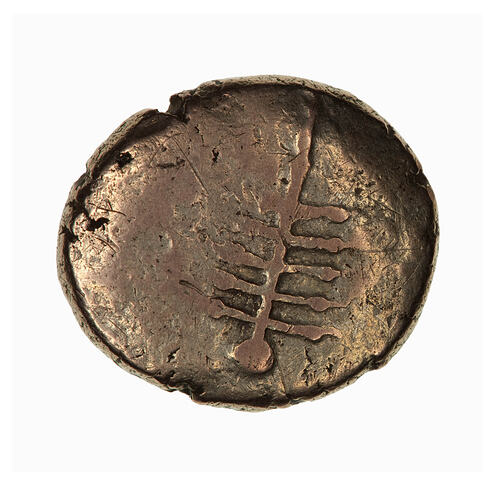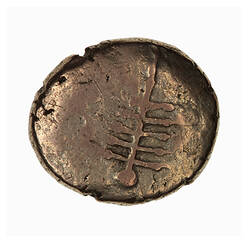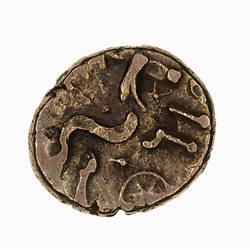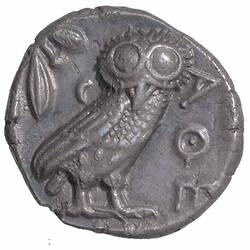Summary
Gold coin; Denomination: Stater.
Struck under a "King" of the Celtic tribe the Dobunni called Comux (Evans suggests that the X might be considered as a form of S). The monarchs of the Dobunni are known only from their names on their coins. The order of their rule and even if they should be called Kings is unknown but is probably what the Romans would have called them.
Mack (p.127) suggests that the previous un-named staters from the last of the Gallo-Belgic invasions (known as Gallo-Belgic F) would have reached Western England and the lands controlled by the Dobunni in about 40 BC, local production, characterised by the tree-like branched emblem on the obverse, should therefore have occurred after that date. The additions of names of 'Kings' or chiefs came leter with Mack offering the order Anted, Eisu, Aatti, Comux, Inham, Corio and Bodvoc. This is uncertain, the coins may have been the issues of regional chiefs among the Dobunni and some may be simultaneous issues.
Obverse Description
Branched emblem with five arms on either side of central stalk, beads on the end of each branch and the main stalk.
Reverse Description
Crude horse to right; below, wheel; above base of letters 'COMVX'.
Edge Description
plain
More Information
-
Collection Names
-
Collecting Areas
-
Acquisition Information
Transfer from National Gallery of Victoria (NGV), 15 Mar 1976
-
Date Issued
40 BC-43 AD
-
Issued By
-
Issued To
-
Denomination
-
Series
-
Material
Gold
-
Axis
6
-
Classification
-
Category
-
Discipline
-
Type of item
-
Overall Dimensions
2 mm (Depth), 18 mm (Outside Diameter), 5.544 g (Weight)
16*18 mm
-
Shape
Irregular
-
References
[Book] Mack, R. P. 1975. The Coinage of Ancient Britain., p.137, no.392 Pages
[Book] Skingley, Philip. 2007. Coins of England and the United Kingdom., Spink p.35, no.385 Pages
[Catalogue] Pullin, Ruth. 2011. Nature Revealed: Eugene von Guerard.
-
Keywords



